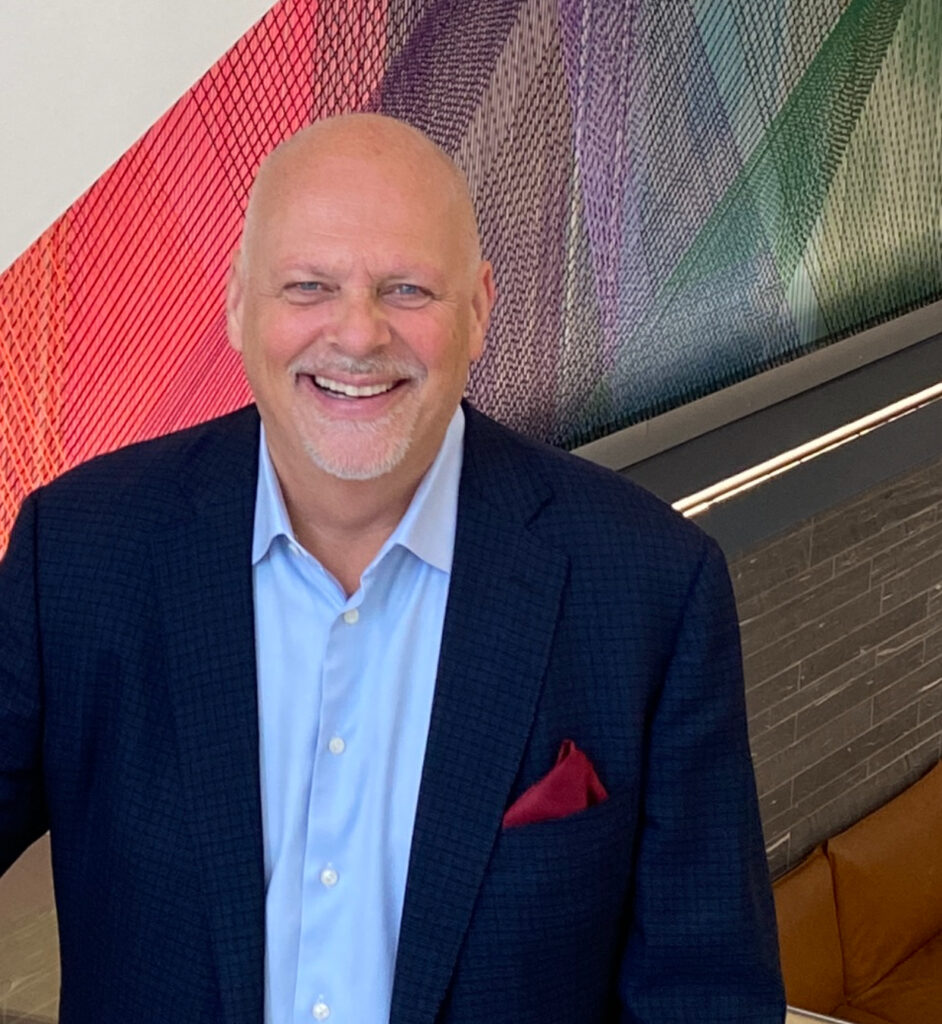Thane Stenner, founder of Stenner Wealth Partners+ at CG Wealth Management, works with some of Canada’s wealthiest families and entrepreneurs. Stenner is the Chairman Emeritus of ultra-high-net worth (UHNW) network Tiger 21 in Canada and previously held award-winning consulting roles at Morgan Stanley/Graystone Consulting, based in California as Managing Director, International Client Advisor, Institutional Consulting Director, Alternative Investments Director and Portfolio Manager. He also hosts “Smart WealthTM with Thane Stenner,” a podcast produced by BNN Bloomberg Brand Studio.
So, with money-in-motion events should you sit back and relax?
It may not be the worst advice following a large money-in-motion event like selling a business, receiving a large inheritance, receiving substantial assets from a divorce, or taking a company public. Yet to a wealth advisor to Canada’s wealthiest families—including a handful of multi-billionaires—it’s by no means great advice.
“Common wisdom is to put the money in the bank, do nothing for a year, and then start to deploy capital and invest,” says Stenner, whose virtual/in-person Multi-Family Office/Outsourced CIO consulting team deals with 51 clients across Canada, including many single-family offices (SFOs). “In my view, that’s lazy advice.”
Building upon a previous examination of preparing for big liquidity events, as part of the Stenner Wealth Partners+ wealth management series for ultra-high-net-worth Canadians, Stenner describes the fundamentals of building an investment blueprint and a specific deployment plan for large liquidity events. Stenner explains why ‘sitting tight’ is generally a bad start to ensuring your money windfall will meet your hopes, dreams and goals. Not developing a personalized Investment Policy Statement (IPS) and/or Detailed Deployment Plan (DDP) can actually cause some anxiety for the wealth holder.
Not too fast or too slow
Taking a breath is indeed warranted after a money-in-motion event. Just don’t let the engines idle too long, Stenner cautions.
“If you wait a year, you miss opportunities you’re likely to regret,” says Stenner, an expert advisor who has shepherded clients through dozens of liquidity events during his successful career, while servicing a select group of UHNW clients from across Canada, whose net worths range from $25 million to over $3 billion.

Often, individuals choosing to wait without deploying a plan find themselves overcome with FOMO—fear of missing out—when markets soar as they sit on the sidelines. This can lead to chasing past returns, leading to worse outcomes, i.e. selling at a loss and destruction of capital.
That said, Stenner has seen entrepreneurial individuals go the opposite direction. “Entrepreneurs are very driven,” Stenner says. “They don’t like to waste opportunities.” Often, they want to put money to work quickly in market segments they know best—where they’ve made their wealth. “Certainly, concentration of capital can create wealth, but diversification preserves it,” Stenner says.
“This is at the heart of conversations because entrepreneurs are biased toward investing in what has worked for them in the past,” he says. Stenner typically then asks: Would they have paid the price they just sold their business for? Often, the answer is ‘Heck no, the buyer paid me too high a price.’
“That tells me they got a great price, which is great, but it also means their sector is probably also currently overvalued,” he adds. “It’s great to maximize the business exit value, but if you sell high, don’t buy high into the same highly valued sector.”
Regardless of where individuals sit on this Wealth CurveTM spectrum, the stakes are much higher than before. “So are the emotions,” Stenner adds. “A 10 per cent move down on a $100 million portfolio is a lot of money, and fear and regret can take over, potentially sabotaging their capital plan.”
A capital idea, backed by vision
You shouldn’t rush, but you should plan. Proper planning for capital deployment cannot begin without an investment policy statement. “This is a blueprint, based on your goals, that will guide how you invest longer term,” Stenner says.
An investment policy statement involves in-depth discussions to uncover what is important to you, what you want your money to do, and what your risk tolerance is when markets turn volatile. The answers will guide investment strategy to meet all your goals, including a sustainable income for lifestyle needs.
The statement also determines long-term asset allocation: how much capital to equities, bonds, alternatives, cash and, for entrepreneurs, a bucket of capital for future business ventures.
It also sets out how much these strategic/tactical % allocation ranges for the long-term growth and capital preservation can be toggled tactically to adjust to near-term risks and opportunities. For example, if your strategic allocation to equities is 50 per cent, your investment policy statement may allow for tactical rebalancing (+/-10 per cent) to less or more exposure depending on current market conditions. Last is determining appetite for downside risk or what is sometimes called ‘your risk budget’, he adds.
“Basically, how much downside can you psychologically stomach and financially handle?”
Putting money to work
The next step is a road map to put the money to work: a highly specific deployment plan setting out the ‘how,’ ‘when’ and ‘where’ capital will be invested.
Think of it as the engineering underpinning of the investment policy statement to determine the pace capital that will be re-deployed, to what asset classes, and then to what underlying investments, based on risk and opportunity. Taking time to educate clients is crucial, Stenner notes. Among the topics with many clients is navigating frothy markets like we’ve seen recently.
“The strong performance of the U.S. market, which has just reached all-time highs, is often where clients are eager to re-invest,” he says. Undoubtedly, the strategy has been lucrative, but Stenner reminds them about the risk of chasing overvalued investments—as the U.S. stock market has been recently. He encourages them to invest like Wayne Gretzky played hockey.
Invest where the puck is going versus where it’s been.
Wayne Gretzky
This approach often involves investing more in fundamentally sound but unloved, overlooked investments currently down in value. “That said, the approach is not all or none.”
Stenner adds individuals should still deploy capital to U.S. stocks, for example, because markets can keep moving higher–albeit with reduced exposure. Rather than putting a large sum to work off the hop, money should be dollar-cost-averaged over 12 to 24 months, he says. In contrast, asset classes, geographies, sectors and industries already down in value would receive more capital deployed at a brisker pace.
Stenner notes that in mid-2025 commodities would fit the description. “The asset class has been quite cheap relative to U.S. stocks. As such, he might advise deploying capital over six months to a year to take advantage of current lower prices.”
What’s your style?
Investment strategy comes in many flavours. Broadly, does the strategy involve individual stocks, bonds and alternatives, a passive approach with exchange-traded funds (ETFs), active managers, including hedge funds, or a mix of all of the above?
Each has its own pros/cons and risks. Stenner says his firm’s approach has been allocating capital to ETFs for broad-based strategic and tactical thematic exposures globally, at low cost. Yet more active engagement may also be warranted especially if markets continue to be volatile and struggle to trend upward—conditions that often favour active managers. Again, what is important is not to chase hot past performance.
“Where a lot of mistakes occur is deploying capital to great active managers after they’ve had a really strong run,” Stenner says. Research shows that these managers often end up afterward being performance laggards. MorningStar and Dalbar Research have historically shown that strong performance by managers, over the last three years in particular, tends to disappoint over the next two to three years.
What’s more, each portfolio component—be it a stock or ETF—must address long- and short-term needs. Notably, care must often be paid to generating tax-efficient income for the near-term from a mix of interest, dividends, return of capital and capital gains while still preserving and growing capital for decades to come.
Think big… because you are
After a major liquidity event, you’re no longer a typical high-net-worth investor. Stenner cites Morgan Stanley’s term for investors with $50 million or more investable assets: “They’re insti-viduals.”
The level of wealth affords investment opportunities and pricing offered to pension funds and other institutional investors. While being big requires thinking big, it also requires being smarter, Stenner says.
“That’s why a personalized IPS and/or DDP are so vital,” he adds. “They determine how to practically put your money to work to achieve your goals without risking your wealth going up in smoke.”
*Responses have been lightly edited for clarity and length.
Follow Thane Stenner and Stenner Wealth Partners+ on LinkedIn.
Thane Stenner Interviews/Articles, Member of Canadian Family Offices.
About Stenner Wealth Partners+
Stenner Wealth Partners+ (SWP+) is an in person/virtual Multi-Family Office/Outsourced CIO Consulting team of financial/wealth specialists with a boutique approach and global perspective. SWP+ serves Canadian and US investors/households with generally a minimum of 10M+ in investable assets or 25M+ net worth. As a CG Wealth Management team, SWP+ is a highly exclusive practice team with one of Canada’s largest independent wealth management firms. Client Range of Net Worths: between $25M To $3B+. They strategically limit new client engagements, onboarding only six to eight new key relationships annually to ensure a highly personalized and focused approach. SWP+ is a member of Canadian Family Offices.
About CG Wealth Management
The global wealth management business is entrusted with C$125.3 billion in client assets1. The wealth management operations of the Canaccord Genuity Group (CG Wealth Management) provide comprehensive wealth management solutions and brokerage services to individual investors, private clients, family offices, Donor Advised Funds (DAFs), and intermediaries through a full suite of services tailored to the needs of each client.
1Canaccord Genuity Annual Report, June 30, 2025
Disclaimer: This story was created by Canadian Family Offices’ commercial content division on behalf of Stenner Wealth Partners+ at CG Wealth Management, which is a member and content provider of this publication. CG Wealth Management is a division of Canaccord Genuity Corp., member of CIPF and CIRO. Thane Stenner’s views, including any recommendations, expressed in this article are his own only, and are not necessarily those of Canaccord Genuity Corp.

